Accessibility on Your Farm

Barrier-Free
It can mean grandma and her walker, someone with limited mobility in their hands or in their limbs, or someone with impaired vision (blind or semi-blind, or even colour-blind).
It can include people walking but with mobility disabilities, like spina bifida or an injury.
It can include mental challenges for more complex motions.
As an able-bodied person, it can be tough to imagine how going through even simple tasks and daily life can be 10x harder with a disability. Fun fact: Apparently, these people are more creative in general as they deal with problem-solving challenges more often than the normal person!
So giving them some ability to enjoy your farm, market, or building is a small joy and gift you can give.
A simple change, such as switching from knob handles to lever handles, can make a huge difference!
Disabilities Act
- Wider hallways
- 38” doors, some with power operators
- Universal washrooms (and barrier-free), ask me what the difference is during a project scouting call…
- Ramps
- Smooth surfaces beyond the building
- Textured cues on walkways
- Elevators or ramps
- Accessible cash stations
- Barrier-free parking stalls (close to entrances and with barrier-free surfaces)
- Barrier-free showers (when showers are provided)
- Accessible chairs or seating
One of the biggest challenges on a farm is creating barrier-free outdoor surfaces. They can be a significant investment, but that will pay dividends over the long term. As Scott from Lewis Adventure Farm stated about many of his investments, “I was mad when we had to do it, but I’m really glad we did!”
The paths reduce dead grass and wear and tear, as people are more likely to stay on them. It will reduce dust and dirt everywhere!
One of the biggest challenges on a farm is creating barrier-free outdoor surfaces. They can be a significant investment, but that will pay dividends over the long term. As Scott from Lewis Adventure Farm stated about many of his investments, “I was mad when we had to do it, but I’m really glad we did!”
The paths reduce dead grass and wear and tear, as people are more likely to stay on them. It will reduce dust and dirt everywhere!
Barrier-Free Materials & Resources
Here are a few options to consider. Make sure you run these past your municipality before you invest, as approval may depend on your municipality.
Concrete
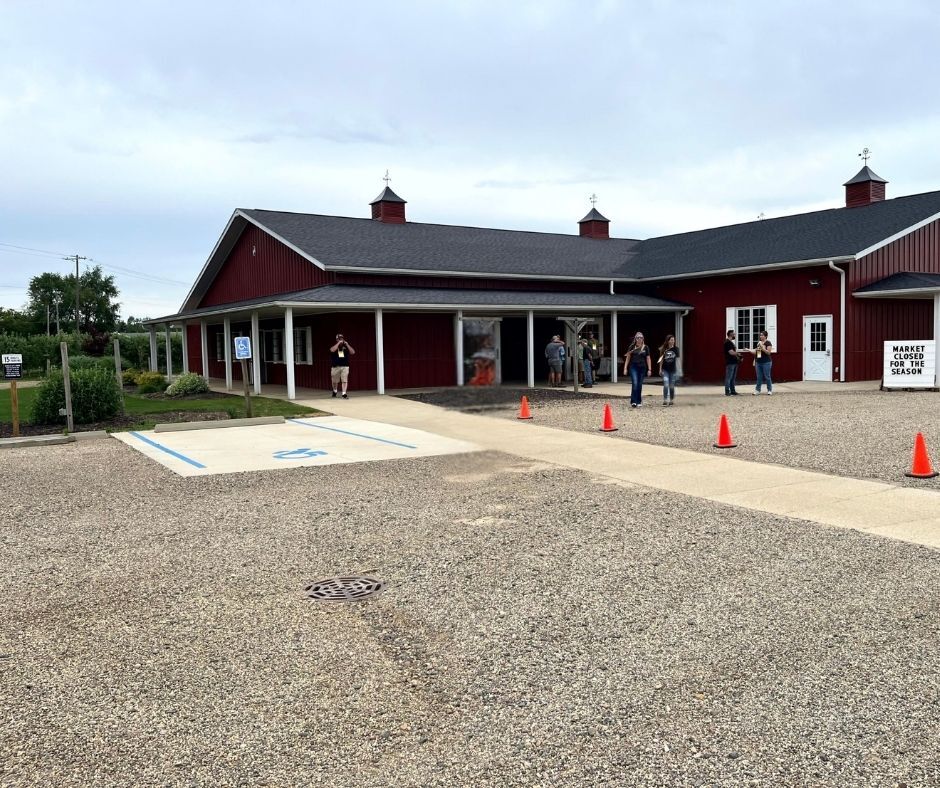
Asphalt
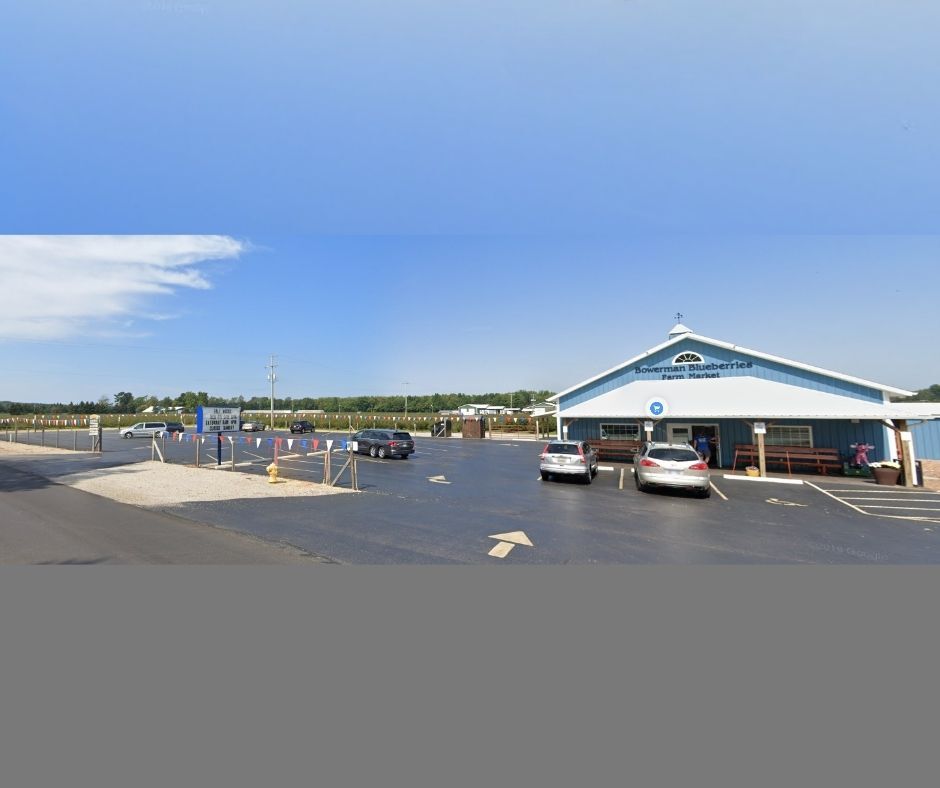
The next best smooth surface is asphalt.
It will for sure meet building code standards and the engineering department of your municipality.
Again, proper subgrade preparation is required to make it last a long time. It also has the added benefit of being used for fire truck access routes, if needed on your site.
Ashplant is slightly less expensive than concrete. If you paint the lines, you will also need less parking area, and people will park more efficiently. Asphalt can get hot and radiate heat, so it's not a great surface for places where the general public will want to “hang out” because they won’t.
Asphalt is also a great way to welcome cyclists. Gravel can be VERY dangerous as they enter the lane.
PROS
clean
meets code
cleanable
low maintenance (unless stained or coloured)
CON
costly
permanent
hot
plain
Crushed Limestone
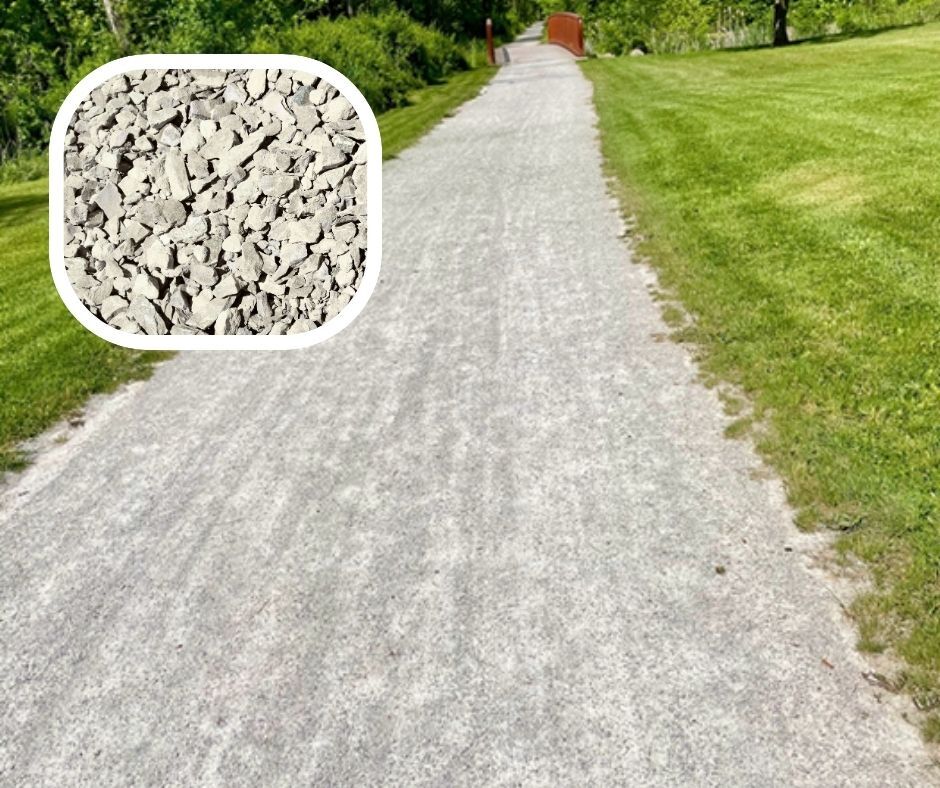
PRO: cost-effective and somewhat flexible or movable
CON: dusty, needs confirmation to meet code by municipality, higher maintenance, replace surfaces more often
Wood Boards
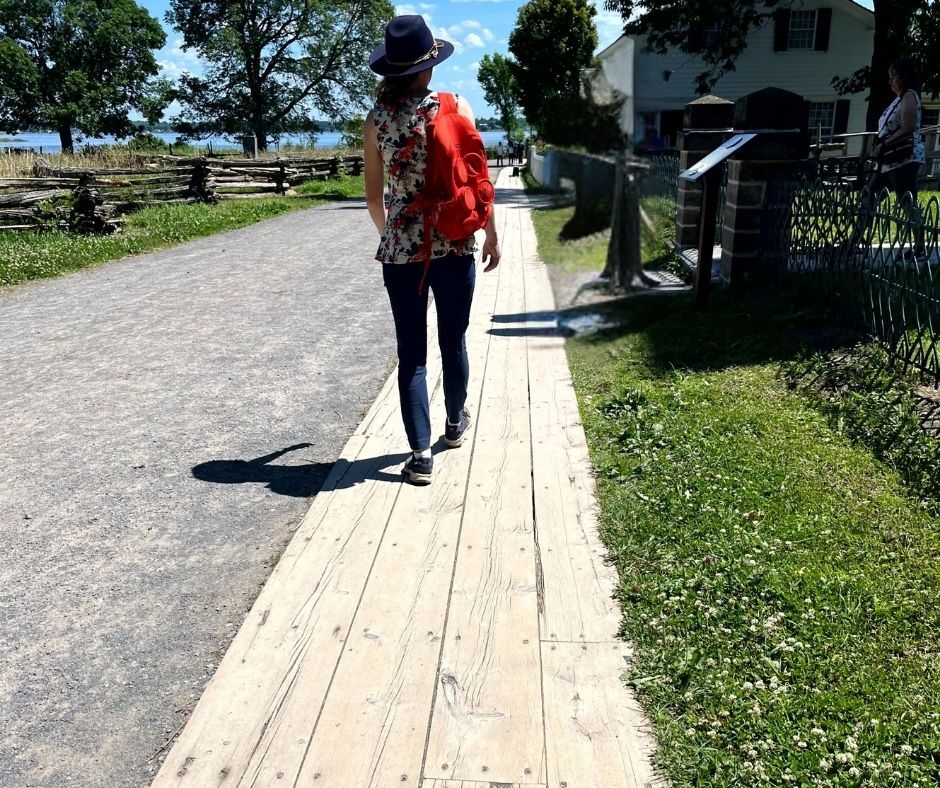
I found this wood surface to be very comfortable to walk on. I experienced it at the Upper Canada Pioneer Village, and it was made with 2x10 planks on the sides, bolted to a subsurface board every 4’.
I couldn’t quite determine what was below the planks, but it made an enjoyable surface, mostly accessible, and looked very lovely as well!
PRO
- Looks nice, rustic
- Accessible alternative
- Cleanable
- Somewhat flexible/movable
CON
- Moderately expensive
- Likely to need replacing more often
- Needs approval from the authorities
Mesh Mats
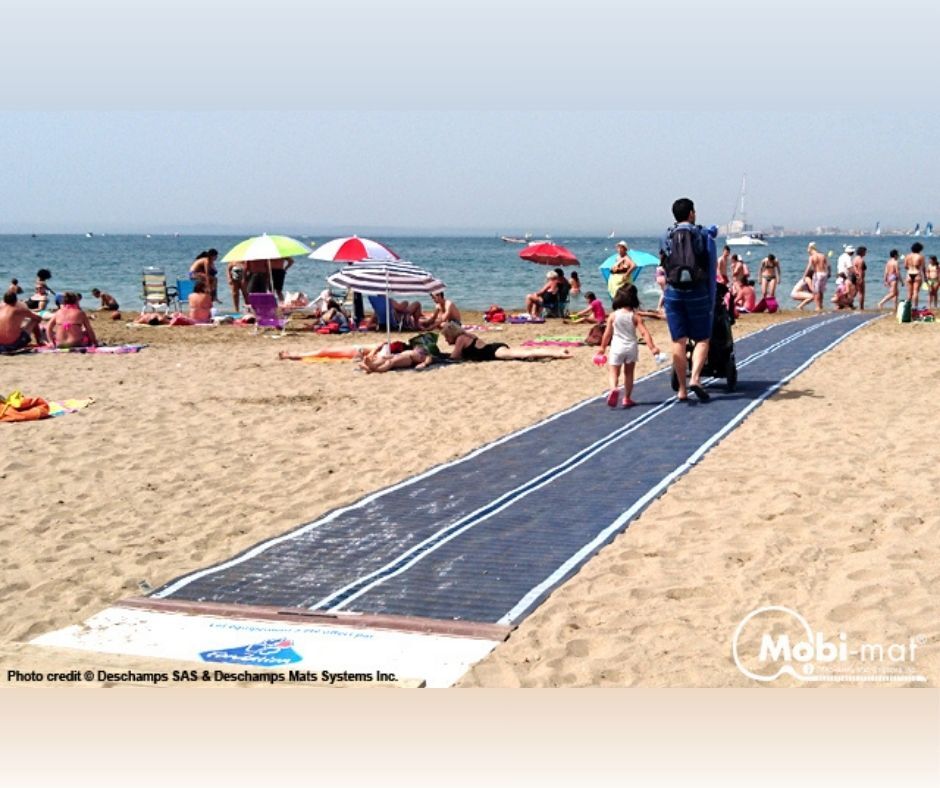
You may have seen this at a local beach. It's a mat that "floats" over the sand, creating a hard surface for strollers, walkers, and wheelchairs to get down to the water.
This has great potential, especially for a walkway that needs to be moveable, such as in corn mazes, flower fields, or pick-your-own farms.
Here is a link to a supplier we have not yet used.
PRO
flexible, movable, and temporary
meets code
cleanable
CON
cost unknown
Non-Barrier-Free Materials

Things that don’t generally pass for BF surfaces: grass, gravel, fields, dirt, mulch, or even almond shells (learned this one from a farm near California, cheap apparently).
Many barrier-free upgrades are also just helpful to the general public. I loved the universal washrooms when I had young kids.
We could all be in there, no one would run away, and I didn’t have to worry about touching the unsanitary surfaces or peeking eyes under the stall partitions!
In summary
Many farms extend their weekly offerings to seniors, such as flower bouquet making, goat petting, seniors' days, etc. This means accessibility can improve revenue streams as well as community building!
So, although it may seem overkill right now, imagine if you were on the other side, would you want to experience your farm with your family?
Now that we have emphasized the importance of accessibility on your farm, the Disabilities Act, and introduced you to barrier-free materials. We encourage you to develop a plan to ensure your farm is accessible to everyone. If you're uncertain about meeting code requirements, our project scouting service can help by identifying all necessary regulations and providing tailored solutions.Book your project scouting call today to get started on making your farm more inclusive and compliant.